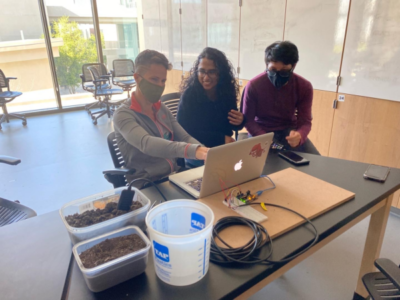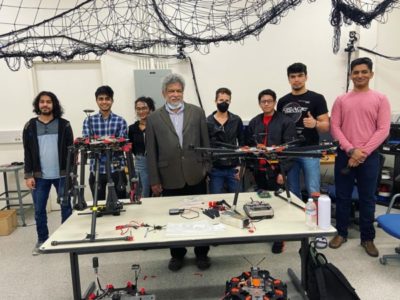An update on Project DIANA, a student-run project under EPICS in IEEE.
By Amanda Weissman
Seven students of IEEE STEAM Club at Ohlone College have taken on the wide-scale goal of reducing harmful gasses to preserve both native and endangered species while improving biodiversity in the surrounding area. 
The team has learned that harmful gasses continue to infiltrate the air putting endangered and native plant species at risk. The high concentration of nitrogen gas is a contributor to global warming and the steady decline of biodiversity, as excess nitrogen waste has caused a stunt in plant growth within surrounding areas.
Project DIANA is in Phase one of a three-phase plan to battle this problem. Phase one includes research and data acquisition. To help assist with their initial research on these harmful gasses, the team began reaching out to professors and scientists within this field.
Preyasi Shah, vice president of IEEE STEAM Club, explained how the more they communicated with professors and scientists, the more issues were brought to their attention. “They all specialize in their own certain kind of gas research, some with methane gas, carbon dioxide, air pollutants, and of course, nitrogen gasses. Because of these conversations, we realized we can implement our prototype on a larger scale and target more contributing gasses,” Shah said. This newly acquired information forced the student team to adapt and make changes to the initial plan.
After they learned about the other gasses and their high sensitivity levels for detection, the students found that their original sensors wouldn’t be adequate. The team continued to research different types of gas sensors available, but they had to make sure they were on budget and relevant to the project.
As phase one continues, the team hopes to learn more about calibrating sensors, data acquisition and visualization, and drone flight logistics. They have already had multiple learning opportunities otherwise not possible without the funding and support of EPICS in IEEE.
 One of these opportunities was a team invitation from a professor at UC Davis for them to visit and see the UC Davis drone project, which had a very similar structure to Project DIANA. “The UC Davis students talked about their planning process, what they had learned, and even gave us a list of parts they utilized in their drone,” Shah said. She explained how both teams exchanged information, making it a learning experience for both sides.
One of these opportunities was a team invitation from a professor at UC Davis for them to visit and see the UC Davis drone project, which had a very similar structure to Project DIANA. “The UC Davis students talked about their planning process, what they had learned, and even gave us a list of parts they utilized in their drone,” Shah said. She explained how both teams exchanged information, making it a learning experience for both sides.
“We’re still in touch with them, every now and then we update each other on our respective projects, but it was definitely one of the most helpful connections we’ve had so far,” Shah said. In addition, the professor got in touch with SONY, and they sent the team free camera sensors, extension boards, and camera boards to attach to the drone.
In the coming months, the team plans on switching focus to Phase two. The student team’s specific goals are to launch the drone on a practice flight and to successfully calibrate their sensors. The next big challenge for the students will be assembling their data into a clean format so that it can be used.
When asked about the difference between their school courses and Project DIANA, Shah said that their courses are far less interactive and not as hands-on. “Our courses don’t teach us about the real-life applications of what we are learning, you kind of have to go out and do that on your own,” Shah said. The EPICS in IEEE service-learning project has given her, as well as her teammates, the ability to apply their engineering knowledge to a real-world problem and help create a real impact in their community.
The team’s end goal is to present a final report on their findings to the Wildlife Protection Foundation. With the help of newly formed connections, and with the help of IEEE’s professional network, the students are confident they will succeed and make positive changes for their community.

Recent Comments